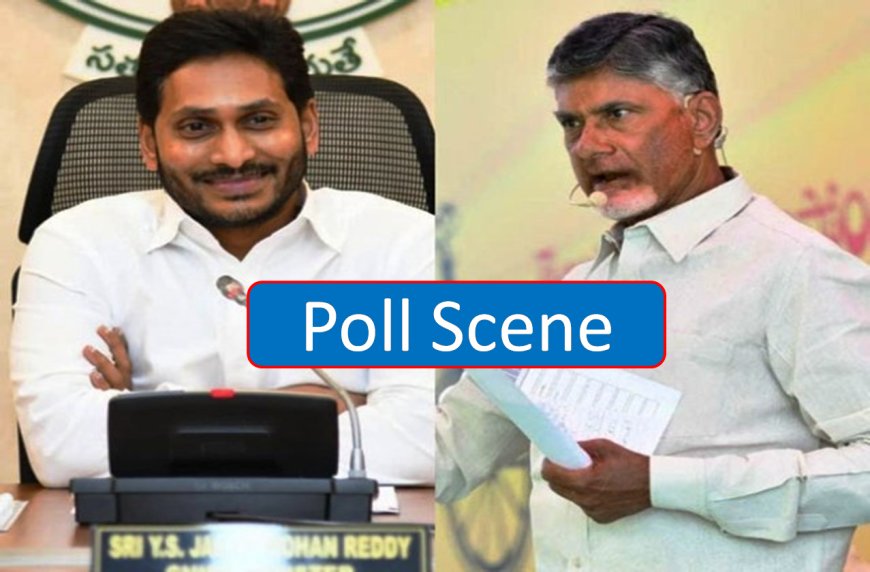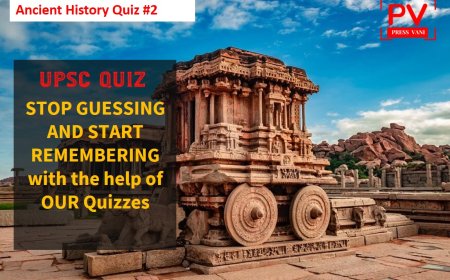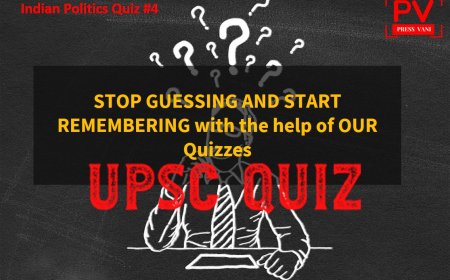Andhra Pradesh: Battle lines drawn
The electoral battle in the Southern state of Andhra Pradesh is heating up with the battle lines virtually drawn

---Sri Krishna
The electoral battle in the Southern state of Andhra Pradesh is heating up with the battle lines virtually drawn ahead of polling to the Lok Sabha and Assembly which are expected to be held simultaneously.
Though the BJP led by Prime Minister Narendra Modi is yet to open its account in the state – Lok Sabha and Assembly – the saffron party appears to be in an upbeat mood since its tie up with old ally Telugu Desam Party (TDP) led by former Chief Minister N. Chandrababu Naidu and the Jana Sena Party (JSP) of Pawan Kalyan.
Naidu who has the record of serving as the chief minister for the longest period of 13 years and 245 days and been in office continuously for eight years and 255 days, had joined the NDA led by late Prime Minister Atal Bihari Vajpayee in 1996 and parted ways in 2018 with the than BJP President and current Home Minister Amit Shah stating “the doors of the NDA were forever closed to TDP.”
But, it only showed what politics is all about as it is the same Amit Shah who welcomed Naidu back into NDA fold.
Ironically both – BJP and TDP – need each other and as of now BJP having set a target of 400+ for NDA and 370 for itself, more than ever needs allies in the South.
However, what is of significance is that in 2019, YSRCP on its own won 22 of the 25 Lok Sabha seats with the TDP bagging the three while in the 175-member Assembly, YSRCP got 151 and TDP got 23 and the Jana Sewa Party got one while the BJP drew a blank in both.
On paper YSRCP does appear to be stronger as far as vote share is concerned having more than even the combined three of TDP, BJP and JSP. The YSRCP got 49.5 per cent while the three together got 46 per cent. The YSRCP got 49.5 per cent votes, TDP got 39.5 per cent, JSP got 5.6 per cent and the BJP came a poor fourth with 0.9 per cent.
Andhra Pradesh which came into being on November one, 1956 on the basis of the Gentlemen's Agreement of 1956, the States Reorganisation Act created Andhra Pradesh by merging the neighbouring Telugu-speaking areas of the Hyderabad State with Hyderabad as the capital and was ruled by the Congress since its inception till 1982 with Neelam Sanjiva Reddy as the first chief minister and who later on was elevated to the highest office–President of India.
In 1983, film star turned politician N.T. Rama Rao popularly known as NTR led his Telugu Desam Party (TDP) to victory in the assembly elections and became the chief minister of the state for the first time within nine months after launching his party, breaking the long-time single-party monopoly enjoyed by the Congress.
However, the Congress returned to power in 2004, led by YS Rajashekara Reddy, better known as YSR and father of the present Chief Minister Y.S. Jagan Reddy. YSR got a second term in 2009 but was killed in a helicopter crash that occurred in September 2009.
During its 58 years as a unified state, the state weathered separatist movements from Telangana (1969) and Andhra (1972) successfully. A new party called Telangana Rashtra Samithi, formed in April 2001 by Kalvakuntla Chandrashekar Rao (KCR), reignited the Telangana movement. When the central government decided to initiate the process to form an independent Telangana in December 2009, Samaikyandhra movement to keep the state united took shape. The agitations continued for nearly 5 years, with the Telangana side led by Telangana Joint Action Committee harping on the marginalisation of food, culture, language, and unequal economic development and the Samaikyandhra movement focusing on the shared culture, language, customs, and historical unity of Telugu-speaking regions. The Andhra Pradesh Reorganisation Act bill was passed by the parliament of India for the formation of the Telangana state, comprising ten districts, despite opposition by the state legislature. The new state of Telangana came into existence on June two, 2014.
With the countdown having begun for Lok Sabha and possibly the Assembly almost simultaneously, caste politics in Andhra Pradesh has intensified with major parties trying to appease various caste groups. The ruling YSR Congress Party is targeting Dalits, while TDP is focusing on the OBCs. The TDP has also formed an alliance with the Jana Sena Party to attract Kapu votes. The Kapus, a politically influential community, have been attempting to gain political power in the state.
While the chief minister Jagan Mohan Reddy-led YSRCP is said to have the backing of the predominant Reddy community, the TDP headed by former chief minister N Chandrababu Naidu has been a traditional Kamma-dominated party. On the other hand, the Jana Sena Party (JSP), founded by renowned actor Pawan Kalyan, is backed by the Kapus, a politically predominant community in the state’s coastal areas.
Ironically, Jagan Reddy is a Christian who comprise 1.38 per cent of the population with about 6.82 lakh.
YSRCP, however, is banking on the vote bank of Dalits through a slew of welfare schemes and programmes, most of which are targeted at luring these sections.
“Nearly 66% of the cabinet berths have been given to the SC, ST, OBC and minorities. Besides, assembly speaker, legislative council chairman, nine zilla parishad chairperson, 58 municipal chairpersons, 79 municipal corporation chairpersons, four Rajya Sabha members and 117 market committee chairpersons are all from these sections,” Jagan had claimed, while addressing Samajika Samatha Sankalpa Sabha (a rally to take a resolve to achieve social justice) at Vijayawada, before unveiling the statue of BR Ambedkar on January 19.
He said that his government had ushered in social justice by allotting 50% of the nominated posts and contracts for SCs, STs, OBCs and minorities through a special law. Even 80% of the jobs of village and ward volunteers were given to these sections, he pointed out.
Ahead of the elections, the chief minister inaugurated the giant Ambedkar statue aimed at attracting the Dalits with the 10-day long state wide caste survey being an attempt to woo the OBCs.
State backward classes welfare minister Srinivasa Venugopala Krishna said, “the survey will help identify the actual percentage of the OBCs so that the benefits of the welfare schemes will reach the real beneficiaries”.
The Jagan government also launched “Samajika Sadhikara Yatra” (social empowerment tour) in the last week of October in which the YSRCP ministers and MLAs took part in a big way by undertaking bus yatras across length and breadth of the state to attract the Dalits, STs and OBCs by explaining the initiatives taken up by the government. The yatras concluded in the first week of January.
On the other hand, the TDP, along with its alliance partner JSP, has been undertaking “Jayaho BC” (Hail OBCs) campaign since January four all over the state to attract the BCs. The party leaders have been conducting meetings and rallies in every district.
“We want to create awareness among the OBCs how the Jagan government has been hoodwinking them in the name of welfare schemes, while looting their hard-earned money by increasing prices of all commodities, including liquor,” Chandrababu Naidu told reporters while launching the programme.
While trying to win back the confidence of the OBCs, the TDP, this time, is trying hard to attract Kapu votes by forging an alliance with the JSP. Kapus are a community of land-owning cultivators and are one of the dominant castes of Andhra Pradesh, generally affiliated to like Balijas, Telagas and Ontaris, constitute 15.2% of the total population in the state. While they are spread all over the state, East and West Godavari districts are considered as strongholds of the Kapus.
Though in the past, the Kapus had voted in favour of the Congress due to their traditional rivalry with the Kammas, who account for 4.8% of the total population, they have been making attempts to gain political power in the state, according to official data. In 2008, there was such an attempt when prominent Telugu film actor Chiranjeevi floated Praja Rajyam Party.
But the Praja Rajyam Party could only win 18 out of 294 assembly seats and got 17.5% vote share. Chiranjeevi could not sustain the party for long and merged it with the Congress in February 2011.
There was yet another opportunity for Kapus to show their power when his younger brother Pawan Kalyan floated Jana Sena Party in 2014, but he did not contest the elections but supported the BJP-TDP combine.
In the 2019 elections, however, Jana Sena contested in alliance with the Left and the Bahujan Samaj Party (BSP) but failed to make any impact. It could win only one MLA seat with a vote share of only 5.54%.
What's Your Reaction?




















































